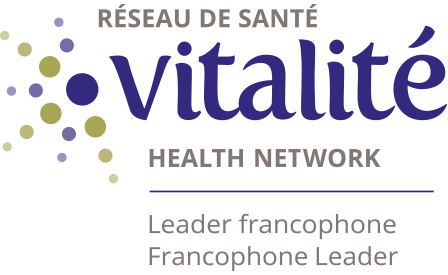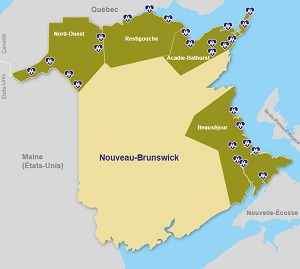Board Policy CA-225: Communications and Public Relations
Effective date: 2022-06-21
Policy
This document covers all policies of the Board of Directors (the “Board”) dealing with communications and public relations, including:
- Internal communications of the Board of Directors;
- Protocol governing media relations;
- Board meetings;
- Relations with employees, partners, and the community.
1. Policies on internal communications of the Board
This policy provides Vitalité Health Network (the “Network”) with a procedure to follow in communicating information to the members of its Board of Directors.
Communication with Board members takes place in accordance with the process set out below.
Information of an exceptional nature
This type of information has the key characteristic of falling outside the Network’s regular operations. Some of this information is related to crises, while, in other cases, it is of a non-recurring nature. This information is communicated to Board members on an urgent basis:
- Matters relating to the positions of Chairperson and of President and Chief Executive Officer (the “CEO”) affecting the Network’s operations as a whole (e.g. an appointment or resignation);
- Major crises in service delivery potentially resulting from an error in service delivery;
- Matters relating to Board of Directors members (appointments, resignations);
Information on matters relating to the Health Authority’s major operations
Key information advising the Board members about the Network’s progress is communicated on an ongoing basis in accordance with the processes and timeframes (as adopted by the Board in consultation with staff) for communicating progress and issuing progress reports.
Duties and responsibilities
With the exception of information relating to the position of CEO, which is communicated by the Chairperson or his or her delegate, the CEO is responsible for ensuring that information is communicated to the Board members within reasonable time frames in accordance with the aforementioned processes and time frames.
Board members are encouraged to bring concerns raised by community members to the attention of the Chairperson, CEO, and Director of Communications.
Implementation and follow-up
The CEO is responsible for instituting any strategy designed to implement this policy governing communications and public relations. The Executive and Governance and Nomination Committee follows up on activities designed to implement this policy and on their effectiveness and makes recommendations to the Board for changes where deemed necessary.
2. Protocol governing media relations
The protocol governing media relations determines how Board decisions are communicated to the public. It includes two sections:
- Guiding principles for Board members;;
- Duties and responsibilities in the area of communications – Chairperson, Board members, CEO, and communications and public relations staff.
Guiding principles for Board members
- The Board members must represent the best interests of the Network’s territory as a whole and not solely of their community of origin;
- The Board members must respect and support the Board’s official decisions and positions in all subsequent communication of these decisions and positions approved by the Board.
Duties and responsibilities in the area of communications
Chairperson of the Board
The Chairperson of the Board is the Board’s official spokesperson. The Chairperson of the Board may comment on issues related to governance (decisions by the Board, appointments/departures of Board members, etc.) and on provincial matters (reactions to government decisions, budgets, appointment of ministers of health, etc.).
The Chairperson of the Board may also comment on the CEO’s behalf, in his or her absence. Similarly, the CEO may comment on the Chairperson’s behalf, in his or her absence. The Vice-Chairperson or a Board member may also be designated to comment in the absence of the Chairperson of the Board.
CEO
The CEO is the Network’s primary spokesperson on operational matters, which include areas such as facilities and services, human resources, crisis communications, labour relations, and financial management. The CEO may appoint a delegate from the senior management team to comment on specific matters.
Communications staff
The Communications Department is the primary point of contact for media and is vested with primary responsibility for the issuance of press releases on the Network’s behalf. All media calls must be directed to the Communications Department to ensure that a response is provided within a reasonable timeframe. The Network’s staff must strive to answer media requests quickly, in collaboration with the Communications Department.
If necessary, the Communications Department may also prepare support materials such as key messages to be conveyed by the spokesperson on a specific topic.
3. Policy relating to Board meetings
The Board meets at least four times per year or more frequently if necessary. The meeting frequency may change at any time at the Board’s discretion.
All public meetings will, following adjournment, include a period for comments from the public.
Board committee meetings will take place in camera.
In camera Board meetings
To protect the privacy of individuals, the business interests of individuals and companies, or the public interest, some items or files will not be addressed during the Board’s public sessions but rather during in camera sessions. The Board will determine the items to be placed on the agenda for the in camera sessions. The Board will use its discretion in addressing certain items in camera, taking guidance from the Personal Health Information Privacy Access Act and other applicable legislation. The communication of Board decisions made during in camera meetings will comply with the provisions of this legislation but may be expanded to include documentation related to the decision-making process.
Public meetings of the Board
The public meetings of the Board are open to the public. Subject to the procedures set by the Board, individuals who are not members of the Board are authorized to attend Board meetings in person as observers and may, under exceptional circumstances, address the Board.
The meetings will take place in accordance with the Network’s By-Laws and policies and procedures.
Participation in Board discussions during meetings will be limited to the Board members, the CEO and other members of the Leadership Team, or third parties attending at the Board’s invitation.
Public meetings will be followed by a period for comments from the public. To ensure that discussions take place in an orderly manner, to allow a diversity of groups to participate and to give all speakers equal time, the provisions below must be followed.
Procedures during public meetings of the Board
An individual wishing to address the Board during a Board meeting must submit a written request to the Secretary of the Board at least 10 working days before the Board meeting in question. The request must include a brief written description of the issue to be discussed and be accompanied by any written document that the individual would like distributed to the Board. The individual will only be authorized to address the Board on issues of governance.
The Chairperson of the Board will examine the requests to the Board in the order in which they are received.
Individuals who request the opportunity to address the Board will be informed of the Chairperson’s decision at least three working days before the Board meeting in question.
Individuals who address the Board will be required to limit their total comments to ten minutes (five minutes of presentation and five minutes of discussion).
At most three presentations will be heard during a given Board meeting. The presentations will take place at the end of the public meeting.
The Board is not required to respond to a presentation and could limit how often a person or group participates, especially when the topic or issue in question has already been discussed and there are no new elements.
No individual or group may address the Board on an agenda item or an issue not on the agenda if that individual or group has spoken before the Board on that topic within the previous 12 months.
Members of the public may also address the Board through a letter or memorandum sent to the Chairperson of the Board to the attention of the Secretary of the Board. Although the Board may examine the issues raised in such correspondence, it is not required to respond.
In some cases, the Chairperson may determine that it is more appropriate for an individual or group to make their comments to a standing committee of the Board or to another organization. In such situations, the Secretary of the Board will facilitate the arrangements for these presentations.
If individuals who are not members of the Board are planning to attend a Board meeting, they are asked to notify the Secretary of the Board.
Members of the public and the media who attend Board meetings may be asked to identify themselves and to indicate whether they have a formal affiliation with the Network (by supplying the name of their media or health care organization).
Individuals who are not members of the Board may attend and report on the public meetings of the Board; however, no photographic, television and/or recording equipment will be allowed at a meeting without the Board’s prior authorization.
Individuals who are not members of the Board may be asked to leave a Board meeting if the Chairperson of the Board deems their conduct inappropriate and if they are disrupting the holding of the meeting. The individuals in question may also be barred from attending future meetings.
Media availability
Since the Network is an employer and major service provider, the meetings of the Board are of particular interest to the media of the communities served by the Network.
A public notice will be printed in newspapers at least five working days before each public meeting.
A media advisory will be sent to all the province’s media organizations at least three working days before each public meeting.
All media representatives who attend a public meeting of the Board must identify themselves to the Communications Department before the meeting begins.
The Communications Department is responsible for distributing any report, document, or other information requested by the media.
Photographic and video recording equipment can only be used with the prior authorization of the Chairperson and CEO. Of course, journalists can use portable Dictaphones during interviews following meetings to assist with transcription.
The Chairperson of the Board and the CEO will strive to be available to the journalists attending Board meetings, following the public portion. This availability will allow the journalists to receive updates from the Board and to ask relevant questions.
The Communications Department will issue a press release after each Board meeting with the Chairperson’s and the CEO approval. At the CEO’s request, the Communications Department will, after a meeting, also contact the regional media that were unable to attend the meeting.
Working language
The working language of the Board is French. However, public presentations to the Board by individuals or groups as well as the questions asked during the comments from the public may be submitted in either official language.
Simultaneous interpretation services will be provided at all public meetings of the Board.
4. Relations with employees, partners, and the community
The Board collaborates with the CEO in developing, implementing, and evaluating a General Communications Plan for the Network. This plan includes strategies designed to convey key messages and information to employees, partners, and the community and identifies means to receive the same from them.

